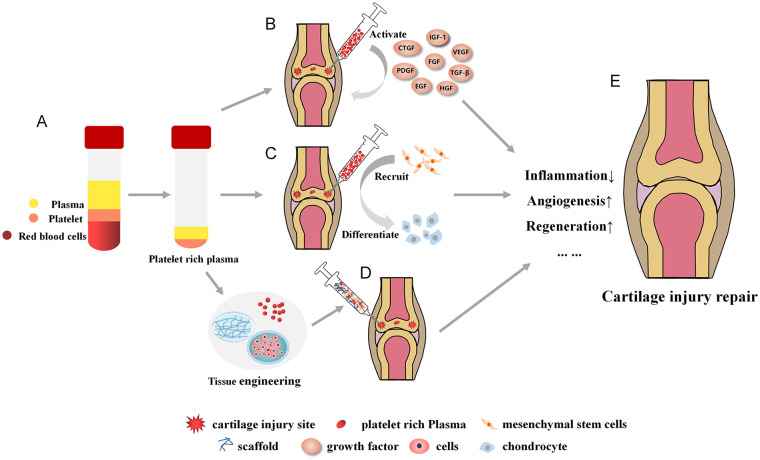Figure 2.
Schematic diagram of PRP in the treatment of articular cartilage injury. (A) Preparation of PRP. (B) Intra articular injection of PRP. After activation of PRP, it can release various growth factors, which can inhibit intra-articular inflammation, promote angiogenesis and effectively restore articular cartilage injury. (C) Intra articular injection of PRP, which can recruit intra-articular mesenchymal stem cells (such as synovial mesenchymal stem cells) to cartilage injury site. Furthermore, growth factor can induce them to differentiate into chondrocytes, enhance cartilage regeneration, and then repair articular cartilage injury. (D) PRP combined with cells and scaffolds to form cartilage tissue engineering scaffolds. The 3 complement each other and promote the recovery of articular cartilage injury when transplanting to the injured site together. (E) PRP can improve articular cartilage injury through a variety of ways and mechanisms. PRP = platelet rich plasma; IGF-1 = insulin-like growth factor 1; VEGF = vascular endothelial growth factor; TGF-β = transforming growth factor-β; HGF = hepatocyte growth factor; EGF = Epidermal growth factor; PDGF = platelet-derived growth factor; CTGF = Connective tissue growth factor.

